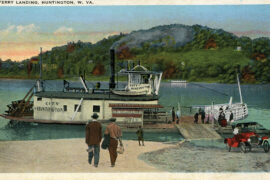By Matthew DeBord
HQ 61 | SPRING 2007
Most people who drink wine, and even plenty who don’t, are familiar with what’s known in the trade as “large format” bottles. But what exactly does that term mean?
A lot of things, as it turns out, and even more than a lot of things, if you expand your definition of “format” to include containers-other-than-bottles.
For example, the reason most people know about large formats is that they know about “jug” wines. Jug wines are actually a bit of an anachronism. They were popular in the 1970s, when some of the big wine companies in America, notably Gallo, introduced inexpensive red and white wines to the market and bottled them in glass “jugs.” These wines, surprisingly, weren’t awful. Gallo Hear ty Burgundy, the most famous of them all, contained nothing that traditionally makes up a “Burgundy” wine (Pinot Noir grapes, specifically), but often did include Cabernet Sauvignon from the Napa Valley, back before the Napa Valley began to produce world-class wines.
Jug wines are a thing of the past because the market for big bottles of el-cheapo wine dried up, replaced by a market for el-cheapo wine in a more conventional 750ml format. Interestingly, however, with the success of the 750ml, so-called “fighting varietals,” a new market was discovered: wine consumers who wanted more of the high-quality, inexpensive varietal wine. Thus, the producers of these wines began to introduce large-format bottles of these wines, but they did not style them as jugs. Rather, they utilized a common European format, the magnum sized bottle, which contains 1.5 liters, or the equivalent of two 750ml bottles.
Some naysayers still lump these inexpensive “mags” in with jug wines, but they shouldn’t. For everyday table wines, they’re the way to go. Most of the bulk-wine producing Australians put them out, for their lower-grade – but still superlative quality – quaffers, the Shirazes and Chardonnays and so on. If you enjoy these wines, you’ll be able to enjoy more of them at a better price if you buy in magnums.
Another large-format category that’s shed some stigma in recent years is the “box wine.” Used to be that wine in a box was the most disgusting swill you could purchase, and it was priced accordingly. But these days, box wines have witnessed a radical quality upgrade. One advantage box-packaging has over bottles is that box wines never go bad. Additionally, they can hang in there after they’ve been “opened” (if you call tapping a little plastic spigot “opening”) much longer than a bottle wine. Box wines are obviously good for parties, but they can also be good if you’re not obsessed with outstanding quality and foresee having a lot of, say, family visiting for a few weeks. You stick the box in the fridge and forget about it.
Of course, large-format wines find their highest expression not with cheap bulk wines, but with some of the most expensive wines on earth. You see, a large-format bottle preserves a wine better than a conventional 750ml bottle, because the large format allows less of the wine’s overall volume to be exposed to light, air, temperature changes, and so on. There are many different gradations, all of which have cool names. In Bordeaux, France, after the magnum comes the “Marie-Jeanne,” then the double-magnum, then the “Jéroboam,” and finally the “Impériale,” which contains the equivalent of eight 750ml bottles and usually has a cork the size of an artillery shell. In Champagne, they have additional categories, all the way up to the monumental “Nebuchadnezzer,” a 15-liter monster that holds 20 regular bottles.
Collectors of fine wines will often pre-order their favorite Bordeaux in a large format-size, understanding that they intend to “lay down” a double-mag of Chateau Latour for a few decades, at least. Large formats can actually pose some challenges when it’s finally time to open them. I was lucky enough to have in my modest wine cellar a Jéroboam of Tattinger Champagne that I decided to serve to the guests at my daughter’s christening. Unfortunately, the bottle was too large to fit in either the fridge or the freezer. So I had to find something big enough to fill with good old-fashioned ice water. I wound up using a crock that had been doing service as an umbrella rack. Worked like a charm. I did spend the better part of the afternoon encouraging people to drink up, however. That was a lot of bubbly!
Another time, I attended a wine dinner where a double-magnum of a well-regarded French wine from Chateauneuf-du-Pape was opened. Simply extracting the cork was a significant exercise in engineering. Then came the decanting, which had to be accomplished by three men working in unison. I think the entire process consumed something like a half-an-hour. It was worth the wait, though, as the wine was delicious.
Now that we are headed into summer, with the emphasis on backyard barbecues and picnics, I think it’s a good time to give big bottles another look. Most summertime fare is pretty simple, and hardly merits pairing with fancy wines. Hamburgers like to meet up with a simple, fruity Syrah. Salads enjoy the company of a basic Chardonnay. Grilled steaks do perfectly well with an unpretentious Cabernet or Merlot.
My money is on the Australians for this kind of wine drinking. Rosemount, Lindemans and Yellow Tail all produce $10-$20 wines, red and white, in the magnum format that are clean, fruit-driven and perfect for patio sipping. On balance, they are superior to the ultra-cheap 750ml wines, such as the now famous “Two Buck Chuck” from Charles Shaw that Trader Joe’s stores sell for a bit more than $2 outside California. Bigger isn’t always better, but sometimes, it’s the way to go.





